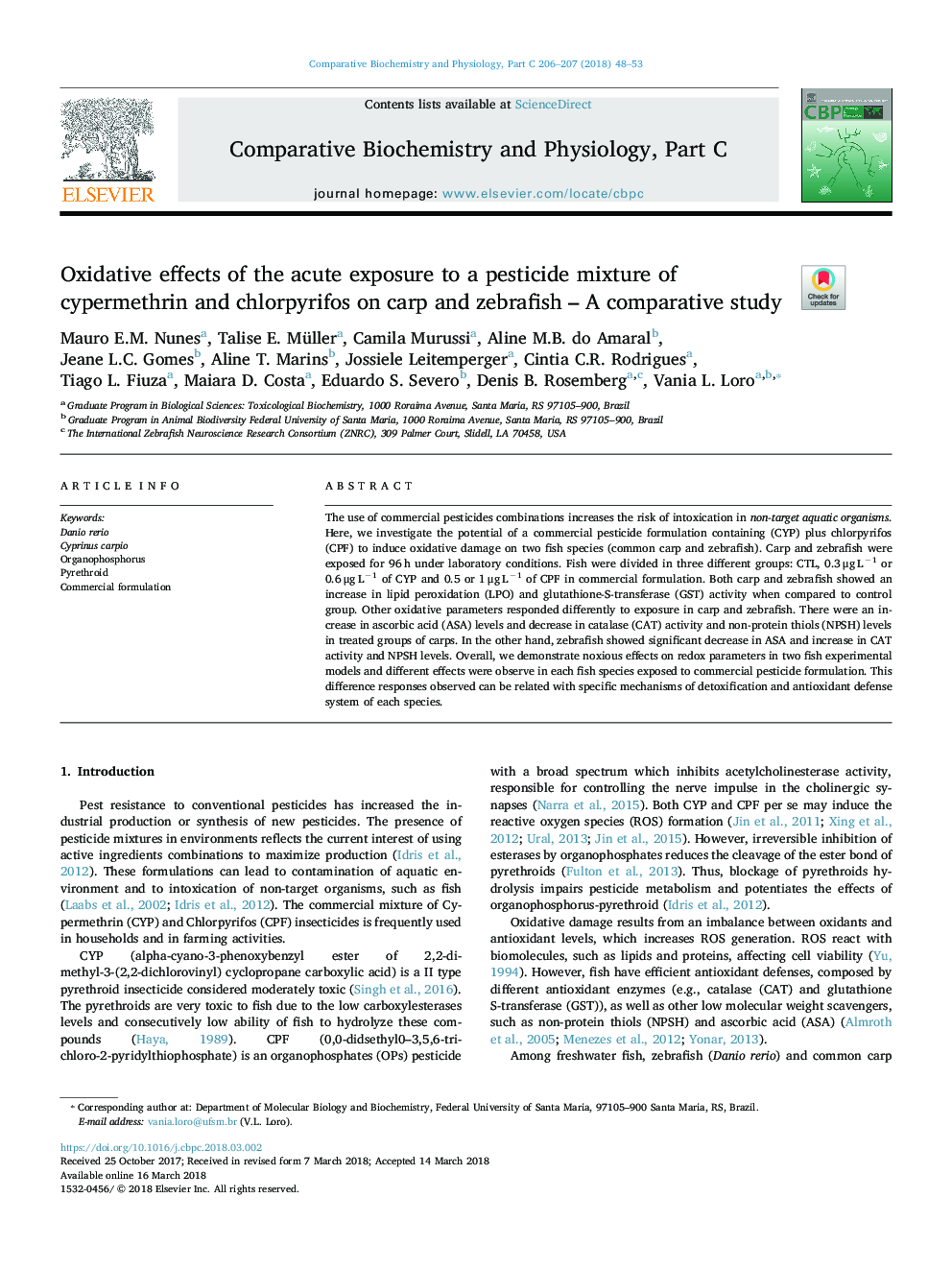| Article ID | Journal | Published Year | Pages | File Type |
|---|---|---|---|---|
| 8319019 | Comparative Biochemistry and Physiology Part C: Toxicology & Pharmacology | 2018 | 6 Pages |
Abstract
The use of commercial pesticides combinations increases the risk of intoxication in non-target aquatic organisms. Here, we investigate the potential of a commercial pesticide formulation containing (CYP) plus chlorpyrifos (CPF) to induce oxidative damage on two fish species (common carp and zebrafish). Carp and zebrafish were exposed for 96â¯h under laboratory conditions. Fish were divided in three different groups: CTL, 0.3â¯Î¼gâ¯Lâ1 or 0.6â¯Î¼gâ¯Lâ1 of CYP and 0.5 or 1â¯Î¼gâ¯Lâ1 of CPF in commercial formulation. Both carp and zebrafish showed an increase in lipid peroxidation (LPO) and glutathione-S-transferase (GST) activity when compared to control group. Other oxidative parameters responded differently to exposure in carp and zebrafish. There were an increase in ascorbic acid (ASA) levels and decrease in catalase (CAT) activity and non-protein thiols (NPSH) levels in treated groups of carps. In the other hand, zebrafish showed significant decrease in ASA and increase in CAT activity and NPSH levels. Overall, we demonstrate noxious effects on redox parameters in two fish experimental models and different effects were observe in each fish species exposed to commercial pesticide formulation. This difference responses observed can be related with specific mechanisms of detoxification and antioxidant defense system of each species.
Related Topics
Life Sciences
Biochemistry, Genetics and Molecular Biology
Biochemistry
Authors
Mauro E.M. Nunes, Talise E. Müller, Camila Murussi, Aline M.B. do Amaral, Jeane L.C. Gomes, Aline T. Marins, Jossiele Leitemperger, Cintia C.R. Rodrigues, Tiago L. Fiuza, Maiara D. Costa, Eduardo S. Severo, Denis B. Rosemberg, Vania L. Loro,
